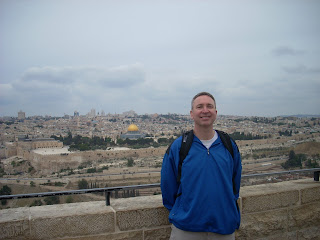
The original excavators literally dug under the city of Jerusalem, underneath houses and businesses to reveal the entire length of the western wall. The excavators were faced with complicated engineering problems, such as maintaining the stability of the structures above them. The original explorers, back in the 1800s describe swimming through the cisterns with a candle to light the way. The modern excavators had to divert the sewage from the houses above them, which on occasion flushed down unexpectedly into the tunnels, which was serving as a general sewage system in many places. After much delicate and difficult work they they found enormous carved stones that are still preserved. There were also remains of the Herodian road which ran alongside the Temple Moun and ancient cisterns that originally were used as water sources. One spot along the wall is not completed. Some scholar speculate that this happened when Herod the Great died and the project was no longer funded, so the workers just picked up their tools and went home.
The biggest stone in the Western Wall is often called the Western Stone. I couldn't fit the whole stone into the picture, but if you look closely at the big stone on top of the smaller stones you can see it in the picture ("smaller stones" is a relative term since the stones on the bottom row weigh several tons apiece themselves). It is one of the heaviest objects ever lifted by human beings without powered machinery. Listen to this: the stone is about the size of a bus, around 40 feet long and about 12 feet wide. They estimate the weight at 570 tons! Think about this. The empty weight of the first 747-400 is about 200 tons, and its maximum takeoff weight (with luggage, people, and fuel) is about 450 tons. They have no idea how this stone was moved into place!!
People did not like the archaeologists digging under their homes, and they had all sorts of fears about their homes and businesses collapsing. One tragedy that has set the course for this site happened on September 24,1996. Prime Minister Netanyah ordered that a new exit be cut through from the Struthion Pool area to the Via Dolorosa nearby. Yasser Arafat commented on the event, alleging the real aim was to make the Temple Mount collapse. This sparked riots in which around 80 people were killed. Normally there is a soldier located at this exit to protect people when they exit the tunnels in the Muslim quarter. Since our tour took place at 10 pm when it was dark and at a time more prone to radical Palestinians harassing people who exit the tunnels we had to retrace our steps and go out the entrance.





























